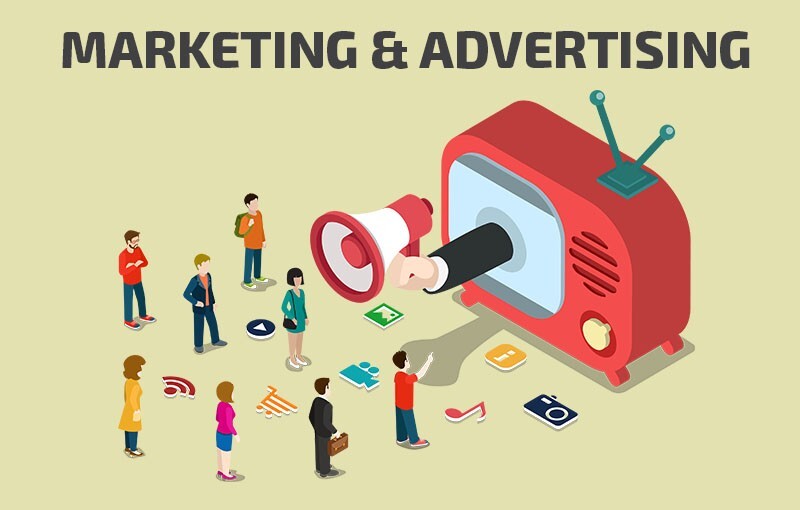
Introduction
In the realm of business strategies, marketing and advertising are often conflated, yet they play distinct roles in achieving organizational objectives. Both functions aim to drive product visibility and increase sales, albeit through differing methodologies and scopes. Gaining clarity on the disparities between marketing and advertising is essential for businesses aiming to optimize their outreach efforts effectively.
What is Marketing?
Marketing constitutes a comprehensive approach encompassing a spectrum of activities aimed at identifying consumer needs, developing products or SEO services in delhi to meet those needs, and strategically promoting them. It entails extensive market research, product conceptualization, pricing strategies, distribution planning, and customer relationship management. Essentially, marketing is about fostering long-term customer relationships and cultivating a robust brand presence.
What is Advertising?
Contrastingly, advertising constitutes a subset of marketing focused specifically on delivering persuasive messages through various media channels to target audiences. The primary goal is to create awareness, generate interest, and stimulate immediate sales responses. Advertising channels include print media, digital platforms, broadcast media, and outdoor signage, leveraging paid placements to amplify brand visibility and influence consumer behavior.
Key Differences Between Marketing and Advertising
Goals and Scope
Marketing: Engages in a broad spectrum of activities to understand consumer needs deeply, build brand loyalty, and establish enduring customer relationships. It aims for sustained market presence and overall business growth.
Advertising: Focuses on short-term campaigns to increase product visibility, prompt immediate consumer action, and enhance brand recall. Its primary objective is to drive sales within specific promotional periods.
Methods and Processes
Marketing: Involves meticulous market analysis, strategic planning, product development, and ongoing customer engagement strategies. It encompasses a holistic approach to aligning product offerings with consumer demands.
Advertising: Centers around crafting compelling ad creatives, selecting optimal media channels, and executing targeted campaigns to reach predefined audience segments. It emphasizes message delivery and immediate impact.
Success Metrics
Marketing: Success metrics include customer satisfaction levels, brand loyalty indices, market share expansion, and overall revenue growth. These metrics reflect long-term consumer engagement and market penetration.
Advertising: Performance metrics focus on reach, frequency, impressions, click-through rates (CTR), conversion rates, and return on advertising spend (ROAS). These metrics gauge short-term campaign effectiveness and immediate consumer response.
Types and Categories of Marketing
Digital Marketing
Digital marketing leverages online platforms and electronic devices to engage with consumers. It encompasses:
- SEO (Search Engine Optimization): Enhancing website visibility on search engine result pages.
- Content Marketing: Creating and distributing valuable content to attract and retain a target audience.
- Social Media Marketing: Utilizing social media marketing services in delhi platforms to foster brand engagement and community interaction.
- Email Marketing: Sending personalized messages to nurture leads and maintain customer relationships.
Traditional Marketing
Traditional marketing employs offline channels to reach consumers. It includes:
- Print Marketing: Advertisements in newspapers, magazines, brochures, and flyers.
- Broadcast Marketing: Commercials aired on television and radio stations.
- Direct Mail: Sending promotional materials directly to consumers’ mailboxes.
- Telemarketing: Engaging potential customers via phone calls to promote products or services.
Types and Categories of Advertising
Online Advertising
Online advertising uses digital channels to promote products. It encompasses:
- Display Ads: Banner ads, video ads, and interactive media placements.
- PPC (Pay-Per-Click): Paying per click-through to drive traffic to websites or landing pages.
- Social Media Ads: Paid promotional content on social platforms like Facebook, Instagram, and LinkedIn.
- Influencer Marketing: Collaborating with influential individuals to endorse products or services.
Offline Advertising
Offline advertising employs traditional media formats. It includes:
- TV Ads: Commercials broadcasted on television networks.
- Radio Ads: Audio advertisements aired on radio stations.
- Print Ads: Advertising placements in newspapers, magazines, and other print publications.
- Outdoor Ads: Billboards, posters, and signage in public spaces to capture local audience attention.
Common and Uncommon Symptoms of Effective Marketing and Advertising
Marketing Indicators
Common:
- Increased Brand Recognition
- Enhanced Customer Engagement
- Improved Customer Retention
Uncommon:
- Viral Marketing Success
- Discovery of New Market Segments
Advertising Indicators
Common:
- High Ad Recall Rates
- Increased Web Traffic
- Boosted Sales Figures
Uncommon:
- Ad Fatigue
- Controversial Publicity
Causes and Risk Factors
Marketing Success Factors
- Thorough Market Research
- Product Innovation
- Competitive Pricing Strategies
Advertising Success Factors
- Compelling Ad Creatives
- Precise Audience Targeting
- Adequate Budget Allocation
Diagnosis and Tests
Marketing Effectiveness Assessment
- Customer Surveys
- Market Analysis
- Brand Audits
Advertising Effectiveness Assessment
- A/B Testing
- Analytics Tools
- Focus Group Studies
Treatment Options
Marketing Adjustments
- Rebranding Initiatives
- Product Line Extensions
- Enhanced Customer Service Strategies
Advertising Adjustments
- Creative Refreshes
- Targeting Refinements
- Budget Reallocation
Preventive Measures
Marketing Strategies
- Continuous Market Monitoring
- Adaptability to Market Changes
- Strengthening Customer Relationships
Advertising Strategies
- Diverse Campaign Approaches
- Ethical Advertising Practices
- Compliance with Regulatory Standards
Conclusion
In conclusion, while marketing and advertising share the common goal of promoting products and driving sales, their methodologies, objectives, and success metrics differ significantly. By understanding these distinctions, businesses can develop integrated strategies that optimize both long-term brand growth and short-term campaign effectiveness.
FAQs
What is the main difference between marketing and advertising
Marketing encompasses a broad range of activities aimed at understanding customer needs and fostering long-term relationships, while advertising focuses on creating immediate awareness and driving sales through targeted campaigns.
How do marketing and advertising work together?
Marketing provides the strategic foundation and consumer insights, while advertising executes specific promotional campaigns to achieve marketing objectives.
What are some examples of digital marketing channels?
Digital marketing services in delhi channels include SEO, content marketing, social media marketing, and email marketing.
Which types of advertising are considered traditional?
Traditional advertising includes print ads, broadcast (TV and radio) ads, direct mail, and outdoor advertising (billboards, posters).
How can businesses measure the effectiveness of marketing and advertising efforts?
Marketing effectiveness can be measured through customer satisfaction, brand loyalty, and market share, while advertising effectiveness is measured through metrics like reach, CTR, and conversion rates.







